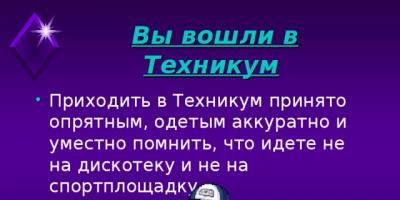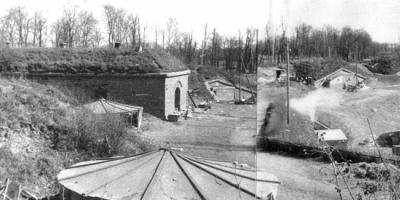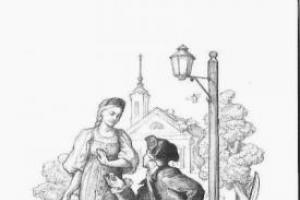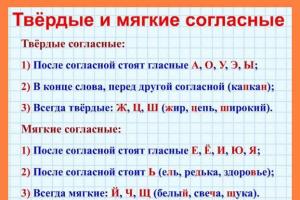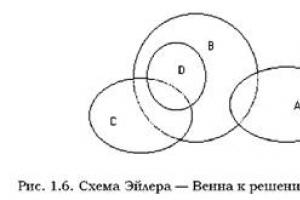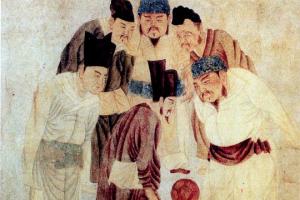Municipal educational budgetary institution
"Sinelnikovskaya secondary school
Oktyabrsky district"
Biology club work program
"Young Biologist"
Biology teacher: V.V. Kisurina
village Sinelnikovo-2
Explanatory note
The work program of the circle is drawn up in accordance with the Federal Law of December 29, 2012 No. 273-FZ “On Education in the Russian Federation” (clause 9, article 2, clause 1, article 48), in accordance with the requirements of the Federal State Educational Standard LLC (order of the Ministry of Education and science of the Russian Federation dated October 6, 2009 No. 373, order of the Ministry of Education and Science dated December 17, 2010 No. 1897, taking into account the changes made to methodological recommendations), the main educational program of the basic general education of the municipal educational budgetary institution "Sinelnikovskaya secondary school of the Oktyabrsky district" dated 2015, in accordance with the federal basic curriculum, a codifier of content elements and requirements for the level of preparation of primary school students.
Target: improving the quality of biological education through the use of modern information and communication technologies, deepening and expanding knowledge and skills in biology, the essence of biological processes, phenomena and their patterns, developing the skills of experimental and research activities of students, working with additional literature; identifying the most capable students.
Tasks:
Educational objectives: formation of a system of scientific knowledge about the system of living nature, the patterns of its development, the historically rapid reduction of biological diversity in the biosphere, including as a result of human activity;
the formation of initial systematized ideas about biological objects, processes, phenomena, patterns, the ecosystem organization of life, the relationship between living and nonliving things in the biosphere;
gaining experience in using the methods of biological science and conducting simple biological experiments to study living organisms and the connection between humans and them;
Developmental tasks: gain experience in using the methods of biological science and conducting simple biological experiments to study living organisms and the connection between humans and them;
development of cognitive interests, intellectual and creative abilities in the process of working with various sources of information, skills in performing standard tasks used in the testing and measuring materials of the Unified State Exam
To develop techniques, abilities and skills for organizing search and research activities, independent cognitive activity, and conducting experiments.
Educational objectives: to cultivate interest in the world of living beings.
Cultivate a responsible attitude towards the assigned work.
To form the foundations of environmental literacy, the ability to assess the consequences of human activity in nature; choose target and meaningful attitudes in your actions and deeds in relation to living nature, awareness of the need for action to preserve biodiversity and natural habitats of plant species;
The introduction of new federal state educational standards has radically changed the conceptual approach to the educational process of schoolchildren. Today, the teacher has the opportunity to independently develop a concept for working with the class, taking into account the individuality of the students. The modern educational process is aimed not so much at achieving results in the field of subject knowledge, but at the personal growth of the child, developing the ability to adequately analyze and evaluate the situation, and the desire for self-education. The program allows you to increase motivation for studying the basic academic subject "Biology", improve the quality of knowledge, develop cognitive activity, creativity, logical thinking, imagination, observation, a research approach to business, broaden your general horizons, identify problem areas in mastering educational material, and provides the opportunity interest students and popularize biological knowledge. The key element in studying biology is practical activity. At this stage, it is very important to help the student realize the need for acquired skills, knowledge, and abilities. The ability to learn is supported by the formation of universal learning activities, which involves creating motivation, identifying and setting goals, and finding effective methods for achieving them.
Only 1 hour is allocated for biology in grades 5-6, and this is sometimes not enough to conduct laboratory work and other classes with a practical focus, so there was a need to create a course of circle work “Young Biologist”. In addition, the circle course includes various materials: Olympiad assignments, training versions of test and measurement materials, which allow you to prepare not only for the Olympiad, but also for the State Examination, and the Unified State Exam, since students, as a rule, have difficulties with questions on anatomy, physiology, morphology and systematics of plants. Tasks of different levels teach children to compare, apply knowledge in various situations, substantiate processes and phenomena, compare and determine their sequence, and independently formulate an answer. It also prepares students to study biology in grades 7–9. Laboratory work, practical classes, and excursions are planned within the circle. The club program contributes to the formation of basic knowledge and skills necessary for a student to study the main branches of biology, helps in the development of sustainable cognitive interest in the subject, and lays the foundations of vital competencies.
Students in grades 5-6 are at an age when their consciousness is maximally open to the perception of any information. They are distinguished by their spontaneity, trustfulness, and curiosity.
The club program is built on the principles of generalization and systematization of educational material, designed for 34 hours, 1 hour per week. The course is included in the section of the curriculum “Extracurricular Activities”, the direction is “Circle work”.
Forms of work : laboratory and practical work, creative workshops, excursions, creative projects; watching videos, mini-conferences with presentations, using the project method, actively involving students in independent project and research work. At the same time, it is mandatory to create conditions for organizing independent work of students, both individually and in groups. When organizing the educational process in biology, it is necessary to pay special attention to the general educational significance of the subject. The study of biology forms not only a certain system of subject knowledge and a number of special practical skills, but also a set of general educational skills necessary for: cognition and study of the environment; identifying cause-and-effect relationships; comparison of objects, processes and phenomena; modeling and design; in Internet resources, statistical materials; compliance with environmental standards; evaluating their activities from the point of view of moral, legal norms, and aesthetic values.
Forms and methods used in working with the program
Verbal and illustrative methods: story, conversation, discussion, work with biological literature.
Reproductive methods: reproducing acquired knowledge during performances.
Partial search methods (when systematizing collection material).
Research methods (when working with a microscope).
Visualization: viewing video, computer presentations, biological collections, posters, models and layouts.
Planned results of STUDENTS mastering the extracurricular activities program
Personal universal learning activities
the readiness and ability of students for self-development and self-education based on motivation for learning and knowledge; readiness and ability to make a conscious choice and build a further individual educational trajectory based on orientation in the world of professions and professional preferences, taking into account sustainable cognitive interests. educational and cognitive interest in new educational material and ways to solve a new problem;
Formation of a responsible attitude towards learning; respectful attitude towards work, experience of participation in socially significant work.
Formation of a holistic worldview that corresponds to the current level of development of science and social practice, taking into account the social, cultural, linguistic, spiritual diversity of the modern world. Orientation towards understanding the reasons for success in extracurricular activities, including self-analysis and self-monitoring of the result, and analysis of the compliance of the results with the requirements of a specific task ;
A conscious, respectful and friendly attitude towards another person, his opinion, worldview, culture, language, faith, civic position. Willingness and ability to conduct dialogue with other people and achieve mutual understanding in it (identifying oneself as a full-fledged subject of communication, readiness to construct an image of a dialogue partner, readiness to construct an image of acceptable methods of dialogue)
Mastery of social norms, rules of behavior, roles and forms of social life in groups and communities. Formation of competencies in analysis, design, organization of activities.
Formation of the values of a healthy and safe lifestyle
The ability to self-assess based on criteria for success in extracurricular activities;
A sense of beauty and aesthetic feelings based on familiarity with natural objects.
Regulatory universal learning activities
The ability to independently determine learning goals, set and formulate new tasks in learning and cognitive activity, develop the motives and interests of one’s cognitive activity.
The ability to independently plan ways to achieve goals, including alternative ones, to consciously choose the most effective ways to solve educational and cognitive problems.
The ability to correlate one’s actions with the planned results, monitor one’s activities in the process of achieving results, determine methods of action within the framework of the proposed conditions and requirements, and adjust one’s actions in accordance with the changing situation.
The ability to evaluate the correctness of completing a learning task and one’s own capabilities to solve it.
Possession of the basics of self-control, self-esteem, decision-making and making informed choices in educational and cognitive
Cognitive universal learning activities
The ability to define concepts, create generalizations, establish analogies, establish cause-and-effect relationships, build logical reasoning, inference (inductive, deductive, by analogy) and draw conclusions.
Meaningful reading. The student will be able to:
find the required information in the text (in accordance with the goals of your activities);
navigate the content of the text, understand the holistic meaning of the text, structure the text;
establish the relationship between the events, phenomena, and processes described in the text;
summarize the main idea of the text;
transform the text, “translating” it into another modality, interpret the text (fiction and non-fiction - educational, popular science, informational); critically evaluate the content and form of the text.
Formation and development of environmental thinking, the ability to apply it in cognitive, communicative, social practice and professional guidance.
Development of motivation to master the culture of active use of dictionaries and other search engines. The student will be able to:
determine the necessary keywords and queries;
interact with electronic search engines and dictionaries;
form a multiple sample from search sources to objectify search results;
correlate the search results with your activities.
build messages and projects in oral and written form;
Communicative universal learning activities
Ability to organize educational cooperation and joint activities with the teacher and peers; work individually and in a group: find a common solution and resolve conflicts based on coordinating positions and taking into account interests; formulate, argue and defend your opinion
The ability to consciously use verbal means in accordance with the task of communication to express one’s feelings, thoughts and needs to plan and regulate one’s activities; mastery of oral and written speech, monologue contextual speech
Formation and development of competence in the field of use of information and communication technologies (hereinafter referred to as ICT).
The substantive results of mastering the course are the following skills:
use scientific methods to recognize biological problems; give a scientific explanation of biological facts, processes, phenomena, patterns, their role in the life of organisms and humans; carry out observations of living objects, one’s own body; describe biological objects, processes and phenomena; carry out simple biological experiments and interpret their results.
acquire skills in using popular science literature on biology, reference materials (on paper and electronic media), and Internet resources when performing educational tasks.
highlight the essential features of biological objects (plant cells and organisms) and processes characteristic of living organisms;
argue, provide evidence of the relationship of various taxa of plants, animals, fungi and bacteria;
argue, provide evidence of the differences between plants, animals, fungi and bacteria;
carry out the classification of biological objects (plants) based on determining their belonging to a certain systematic group;
reveal the role of biology in the practical activities of people; the role of various organisms in human life;
explain the common origin and evolution of systematic groups of plants using examples of comparisons of biological objects;
identify examples and reveal the essence of the adaptation of organisms to their environment;
distinguish real biological objects or their images by appearance, diagrams and descriptions, identify distinctive features of biological objects;
compare biological objects and life processes; draw conclusions and conclusions based on comparison;
establish relationships between the structural features and functions of cells and tissues, organs and organ systems;
use methods of biological science: observe and describe biological objects and processes; perform biological experiments and explain their results;
know and argue the basic rules of behavior in nature;
analyze and evaluate the consequences of human activity in nature;
describe and use techniques for growing and propagating cultivated plants and caring for them;
know and follow the rules of work in the biology classroom.
1.Introduction (1 hour)
Nature research methods. Safety rules and first aid measures.
2. Nature under a microscope (5 hours)
A cell is a unit of structure, vital activity, growth and development of organisms. Diversity of cells. The structure of pro- and eukaryotic cells. Cell division. Mitosis and meiosis. Non-cellular forms.
The relationship between the structure and functions of the parts and organelles of a cell is the basis of its integrity. Comparative characteristics of cells of plants, animals, bacteria, fungi. Exploring nature using a microscope.
Preparation of micropreparations of onion scale skin cells, elodea leaf cells, tomato fruits, rose hips. Types of tissues, the difference between plant and animal tissues, structural features and functions of tissues. Working with finished tissue preparations.
3. Structure and diversity of angiosperms (11 hours)
Excursion to the school site, acquaintance with plants of different life forms, autumn phenomena in the life of plants. Preparation of plants for identification and herbarium. Preparation of the excursion report.
Evolution of the plant world.
The concept of "organ". Organs of a flowering plant.
The secret of the seed (features of the structure of seeds). Chemical composition of the seed. Seed germination.
Vegetative organs of a flowering plant. Development of the root from the embryonic root. The root system and life processes associated with it.
Vegetative organs of flowering plants: shoot. Growth and development of the shoot. The structure of modified underground shoots. External and cellular structure of the leaf. Leaf modifications.
The structure of the skin and main tissue of the geranium leaf.
Comparative analysis of the structure of the leaf vein and stem.
Generative organs of a plant: flower. Variety of fruits and seeds.
4.Secrets of plant life.(6 hours)
Processes of respiration and transpiration. Movement of plants.
Methods of plant propagation. Reproduction of spore plants.
5. Systematics. (3 hours)
Working with herbarium material: identifying plants belonging to different families.
6. Organism and habitat. Ecosystem. (4 hours)
Habitat and environmental factors, their influence on plants.
What is an ecological system? Natural and artificial ecosystems.
The relationships of organisms with each other and with the environment.
Excursion No. 3 “Plant community”.
Creative project: “Natural communities of the native land”
7. Areas of plant use. The influence of plant economic activity (5 hours)
The role of plants in nature and human life. Medicinal plants and biologically active substances. Protection, rational use and restoration of plant resources and animals on a planetary scale as the most important international task. Plants of the Red Data Book of the Primorsky Territory and measures for their protection.
Biological essay of your choice: “What do I want to tell about a living organism”, “One day in the life...”
Demos: living objects, herbariums, models, collections of fruits and seeds, representatives of different taxa and ecosystems of the region.
Excursions:
“Seasonal changes in plant life (spring, autumn, winter)”;
“The diversity of plants in our area, their habitats. Recognition of local plant species."
"Plant community".
Calendar and thematic planning
| Form of conduct |
|||
| Introduction - 1 hour. |
|||
| Goals of the circle task. Circle work plan. Nature research methods. Safety rules and first aid measures. | Introductory lecture with elements of conversation. |
||
| Nature under a microscope (5 hours) |
|||
| Exploring nature using a microscope. Rules for working with a microscope. | workshop |
||
| A cell is a unit of structure, vital activity, growth and development of organisms. Diversity of cells. The structure of pro- and eukaryotic cells. Non-cellular forms. | Seminar lesson |
||
| Cell division. Mitosis and meiosis. The relationship between the structure and functions of the parts and organelles of a cell is the basis of its integrity. Comparative characteristics of cells of plants, animals, bacteria, fungi. P/r “Identification of plant cell organelles on the table” | |||
| L/r “Preparation of micropreparations of onion scale skin cells, elodea leaf cells, tomato fruits, rose hips.” Types of tissues, the difference between plant and animal tissues, structural features and functions of tissues. Working with finished tissue preparations. Creative workshop “Creating a cell model from plasticine.” | workshop |
||
| Practical lesson: “Cellular and tissue levels of organization of a plant organism.” Questions from the Unified State Exam and Olympiad assignments. | Workshop Training Exercises |
||
| Structure and diversity of angiosperms (11 hours) |
|||
| Seasonality in nature. Phenological observations. Excursion No. 1 “Seasonal changes in plant life” Plants are weather forecasters, plants are indicators of pollution. | Excursion Research work using Internet resources and reference books |
||
| Comparison of the structure and activity of bacteria with other organisms. Symbiosis of higher plants and bacteria. | |||
| Evolution of the plant world. Level of organization of plant organisms: organ. The concept of "organ". Organs of a flowering plant. | Seminar lesson |
||
| The secret of the seed (features of the structure of seeds). P/R “Chemical composition of seed. Seed germination" | Seminar lesson. workshop |
||
| Vegetative organs of a flowering plant. Development of the root from the embryonic root. L/r “The root system and life processes associated with it. Types of root systems" | Training exercises. |
||
| Vegetative organs of flowering plants: shoot. P/r “Structure of modified underground shoots” | Seminar lesson workshop |
||
| External and cellular structure of the leaf. Leaf modifications. P/r “Structure of the skin and main tissue of the geranium leaf” | Seminar lesson workshop |
||
| L/r “Comparative analysis of the structure of the leaf vein and stem” Testing on the topic: “Vegetative organs of flowering plants” | Training exercises, workshop |
||
| Generative organs of a plant: flower. P/r “Identification of the parts of a flower. Flower formula. Diversity of inflorescences according to herbarium material" | Workshop Seminar workshop |
||
| The fruit is a mature flower. P/r “Diversity of fruits and seeds.” | Training exercises |
||
| Testing on the topic: “Vegetative and generative organs of flowering plants.” Olympiad questions of anatomical and morphological orientation on the topic: “Higher plants” | Training Olympiad tasks OGE tasks |
||
| Secrets of plant life.(6 hours) |
|||
| Life activity of organisms: mineral and air nutrition of plants. Comparative characteristics of the nutrition of plants and animals. | Seminar lesson |
||
| Processes of respiration and transpiration. L/r “Transport of substances in the body”. Movement of plants. | Seminar lesson, workshop |
||
| A plant is a living organism. Relationship between plant organs. Metabolism and energy are the main properties of living organisms. Assignments on the practical application of knowledge about the life processes of plants. | Research work with textbook and reference books Training exercises |
||
| Methods of plant propagation. Reproduction of spore plants. P/r with tables and diagrams: “Features of reproduction of spore plants. Vegetative propagation" | workshop |
||
| Comparative characteristics of sexual reproduction of gymnosperms and angiosperms. | Seminar lesson Training exercises |
||
| Research project: “Vegetative propagation. Cuttings of indoor plants. Use of vegetative propagation by humans" | Research |
||
| Systematics (3 hours) |
|||
| Main systematic (taxonomic) categories: species, genus, family, order (order), class, phylum (division), kingdom; their subordination. | Seminar lesson |
||
| Work with herbarium material: “Characteristics of plants belonging to different families. Flower formulas. | Training tasks workshop |
||
| Excursion No. 2 “Diversity of plants in our area, their habitats. Recognition of local plant species." Thematic knowledge control | |||
"Duremar Laboratory" and other intriguing circles
The scientific laboratory of biology of the Polytechnic Museum, which is located in the ZIL Cultural Center, is headed by the science star, “pocket scientist” of the Pink Giraffe publishing house, lecturer of “Direct Speech” Ilya Kolmanovsky. Activities are open for schoolchildren of any age: first-graders in the Duremar Laboratory raise fruit flies, observe snails and cockroaches, learn to work with a microscope, older children study botany and study the behavior of rats, high school students learn the basics of medicine. Classes are sold in blocks of 10 lessons for 8,000 rubles. You need to take care of the purchase in advance - as a rule, there are many more applicants than there are places in the group.
Add to favorites
Vavilova, 57Work on scientific projects and expeditions
The historical name of the biological circle of the Darwin Museum is VOOP. In the first years of his work, he was a member of the youth section of the All-Russian Society for Nature Conservation. This is one of the oldest circles in Moscow and Russia - organized by naturalist biologist Pyotr Smolin in 1950. The circle is an informal association of ecologists and biologists of different ages - from 5th grade students to third-year students. Classes include lectures, work on your own scientific projects, excursions, and expeditions during the holidays. The circle has its own base in the Kostroma region. The classes are free.

Add to favorites
B. Nikitskaya, 2Classes in Moscow and trips to the taiga and subtropics
The circle of young naturalists of the Zoological Museum of Moscow State University works according to the original program of its director, museum researcher Evgeniy Dunaev. The program is designed for students in grades 7–11 and junior students. Every year the circle conducts practices: in the Moscow region, in the taiga, in the north of Karelia, in the subtropics of the mountainous Crimea or in the Astrakhan deserts. Club members conduct educational and research field work and participate in biological Olympiads. Classes are free, but to enroll you must pass an interview and demonstrate interest in the subject.

Add to favorites
B. Gruzinskaya, 1Two circles - for seniors and juniors
KYUBZ, the circle of young zoo biologists, is the most famous youth association in Russia and probably the oldest biological circle in Moscow (it will soon turn 100 years old). Students are accepted starting from the 7th grade. Classes are held in the form of lectures and seminars, children are engaged in independent scientific activities, help in the zoo and take part in extensive field work: these include short trips outside Moscow and real expeditions. The classes are free.
Those who have not yet reached the level of KYUBZ can study in the “Manulyata” club, named after the mascot of the Moscow Zoo - the manul cat. Children from 7 years old are accepted here. Classes are held once a week. First, the teacher gives a lecture, then everyone goes on a themed tour of the zoo (completely empty at this time of day), then they go to the laboratory or to a living area: touch chickens, snakes, turtles, rats and guinea pigs. In the warm season, they go outdoors: learn to distinguish the voices of birds, collect insects. The cost of half a year is 4500 rubles.

Add to favorites
Leninskie Gory, 1, building 12Entomology and a dozen more different clubs
From entomology to embryology, from mycology to botany. Mostly, students are accepted into clubs starting from the 8th grade, but some also include fifth graders. Getting into the most popular ones is not easy. For example, registration for the “Young Nature Researchers” (YNI) circle for this academic year did not even open - there are no places. The classes are free.

Add to favorites
Kremenchugskaya, 13Biology clubs and family naturalists club
The Intellectual school has several biological clubs. One of them - “The World Around Us” - invites children from 5 years old. Here they learn to observe nature, conduct experiments, care for the inhabitants of the living area, draw and communicate. 4 classes cost 2500 rubles. In another - “Tops and Roots” - younger schoolchildren are told the story of the relationship between man and the plants he has tamed. Who was the first to grow oranges, peas, cabbage? What and how are semolina, dried apricots and brooms made from? How did the Indians make cocoa? This is what the lesson topics look like. Also at the school there are clubs “Human and Animal Physiology”, “Neurobiology”, “Current Issues of Biology” for high school students and “Young Naturalist”. Although the latter is more of a family club, where they teach how to use identification books for mushrooms, plants and animals, and take family outings into nature several times a month.

Add to favorites
26 Baku Commissars, 3, bldg. 5Evening biology school
The biology department of school No. 1543 is one of the best specialized ones in Moscow, and getting into it is not easy. But for 7th grade students there is an Evening Biology School, where education can be considered both as preparation for entering a gymnasium and as an excellent biology club. The curriculum for the current year includes 22 lessons, each of which is devoted to a specific topic: “Primates”, “Cells and genetic code”, “Mendel’s Laws”, “Heredity and Gender”, “Structure and work of the human brain”, “Biosphere” etc. You can start training at any time without prior registration.
Classes are held in parallel at Moscow State University and at gymnasium No. 1543, you can visit any of these places. All classes are free.
KYUBZ is a research circle created in 1924 to train young zoologists, conduct scientific observations of zoo animals and help the zoo.
And now, 90 years later, the guys at KYUBZ are conducting scientific work, observing animals, helping the zoo, and going out into nature.
Over the years of the circle's work, its members included almost 2,000 people, including 9 academicians, 40 professors, about 100 doctors and more than 200 candidates of science. Among the graduates of KYUBZ are famous cultural figures - writers, artists, sculptors.
The work of the KYUBZ consists of:
- Lectures, which are read by “old” KYUBZ members, famous scientists, zoo employees, and circle leaders. Lectures cover a wide range of biological disciplines: vertebrate and invertebrate zoology, botany, cytology, zoogeography, research methods and various practical exercises. The schedule of lectures is compiled every year taking into account the interests of KYUBZ students.
- Circle meetings, at which members of the circle make reports, talk about the work done, about trips, accept new members into the circle and decide on the organization. questions.
- Independent work in the zoo. All members of the KYUBZ conduct scientific observations of zoo animals and write research papers.
- Field trips. They are held on weekends (about once every two weeks in the Moscow region), during school holidays (to nature reserves) and in the summer (a month-long expedition to a nature reserve).
- Help the zoo(members of the circle participate in cleanup days, bring cones, moss, etc. from the forest).
KYUBZ has self-government. The work of the circle is organized by a Bureau selected from active schoolchildren; all controversial issues are resolved at a general meeting. KYUBZ students also participate in the life of the circle, and maintain close contact with KYUBZ students of older generations.
KYUBZ accepts schoolchildren from the 6th grade (exceptions are possible) who are interested in biology and want to study zoo animals and the nature of the Moscow region, Russia. The circle is free. KYUBZ members enter the zoo territory free of charge.
Classes in our club take place:
Wednesdays (lectures) – 17.00-19.00
Sundays - (meetings) – 11.00-13.00
You can come to the club for the first time on any of these days throughout the school year.
ave. Mira, 119, VDNH, pavilion 26"Duremar Laboratory" and other intriguing circles
The scientific laboratory of biology of the Polytechnic Museum, which is located in the ZIL Cultural Center, is headed by the science star, “pocket scientist” of the Pink Giraffe publishing house, lecturer of “Direct Speech” Ilya Kolmanovsky. Activities are open for schoolchildren of any age: first-graders in the Duremar Laboratory raise fruit flies, observe snails and cockroaches, learn to work with a microscope, older children study botany and study the behavior of rats, high school students learn the basics of medicine. Classes are sold in blocks of 10 lessons for 8,000 rubles. You need to take care of the purchase in advance - as a rule, there are many more applicants than there are places in the group.
Add to favorites
Vavilova, 57Work on scientific projects and expeditions
The historical name of the biological circle of the Darwin Museum is VOOP. In the first years of his work, he was a member of the youth section of the All-Russian Society for Nature Conservation. This is one of the oldest circles in Moscow and Russia - organized by naturalist biologist Pyotr Smolin in 1950. The circle is an informal association of ecologists and biologists of different ages - from 5th grade students to third-year students. Classes include lectures, work on your own scientific projects, excursions, and expeditions during the holidays. The circle has its own base in the Kostroma region. The classes are free.

Add to favorites
B. Nikitskaya, 2Classes in Moscow and trips to the taiga and subtropics
The circle of young naturalists of the Zoological Museum of Moscow State University works according to the original program of its director, museum researcher Evgeniy Dunaev. The program is designed for students in grades 7–11 and junior students. Every year the circle conducts practices: in the Moscow region, in the taiga, in the north of Karelia, in the subtropics of the mountainous Crimea or in the Astrakhan deserts. Club members conduct educational and research field work and participate in biological Olympiads. Classes are free, but to enroll you must pass an interview and demonstrate interest in the subject.

Add to favorites
B. Gruzinskaya, 1Two circles - for seniors and juniors
KYUBZ, the circle of young zoo biologists, is the most famous youth association in Russia and probably the oldest biological circle in Moscow (it will soon turn 100 years old). Students are accepted starting from the 7th grade. Classes are held in the form of lectures and seminars, children are engaged in independent scientific activities, help in the zoo and take part in extensive field work: these include short trips outside Moscow and real expeditions. The classes are free.
Those who have not yet reached the level of KYUBZ can study in the “Manulyata” club, named after the mascot of the Moscow Zoo - the manul cat. Children from 7 years old are accepted here. Classes are held once a week. First, the teacher gives a lecture, then everyone goes on a themed tour of the zoo (completely empty at this time of day), then they go to the laboratory or to a living area: touch chickens, snakes, turtles, rats and guinea pigs. In the warm season, they go outdoors: learn to distinguish the voices of birds, collect insects. The cost of half a year is 4500 rubles.

Add to favorites
Leninskie Gory, 1, building 12Entomology and a dozen more different clubs
From entomology to embryology, from mycology to botany. Mostly, students are accepted into clubs starting from the 8th grade, but some also include fifth graders. Getting into the most popular ones is not easy. For example, registration for the “Young Nature Researchers” (YNI) circle for this academic year did not even open - there are no places. The classes are free.

Add to favorites
Kremenchugskaya, 13Biology clubs and family naturalists club
The Intellectual school has several biological clubs. One of them - “The World Around Us” - invites children from 5 years old. Here they learn to observe nature, conduct experiments, care for the inhabitants of the living area, draw and communicate. 4 classes cost 2500 rubles. In another - “Tops and Roots” - younger schoolchildren are told the story of the relationship between man and the plants he has tamed. Who was the first to grow oranges, peas, cabbage? What and how are semolina, dried apricots and brooms made from? How did the Indians make cocoa? This is what the lesson topics look like. Also at the school there are clubs “Human and Animal Physiology”, “Neurobiology”, “Current Issues of Biology” for high school students and “Young Naturalist”. Although the latter is more of a family club, where they teach how to use identification books for mushrooms, plants and animals, and take family outings into nature several times a month.

Add to favorites
26 Baku Commissars, 3, bldg. 5Evening biology school
The biology department of school No. 1543 is one of the best specialized ones in Moscow, and getting into it is not easy. But for 7th grade students there is an Evening Biology School, where education can be considered both as preparation for entering a gymnasium and as an excellent biology club. The curriculum for the current year includes 22 lessons, each of which is devoted to a specific topic: “Primates”, “Cells and genetic code”, “Mendel’s Laws”, “Heredity and Gender”, “Structure and work of the human brain”, “Biosphere” etc. You can start training at any time without prior registration.
Classes are held in parallel at Moscow State University and at gymnasium No. 1543, you can visit any of these places. All classes are free.
Biology is a science that studies living nature. Its modern name appeared only two centuries ago. The school curriculum is unthinkable without studying biology and its subsections - botany, anatomy, zoology. This subject is often chosen by graduates when taking the Unified State Exam and the Unified State Exam, which indicates its significance and popularity.
Many children want to learn more about this science than is expected in the curriculum. They have an excellent opportunity to get acquainted with its sections and features both in theory and in practice. In our city there are ecological and biological centers, laboratories, clubs and other institutions where young naturalists can become more deeply acquainted with the world of plants and animals and learn about environmental protection.
In addition to gaining new knowledge, children will be able to participate in scientific conferences and competitions, prepare for passing exams and entering higher education institutions. Contact with living nature instills in children kindness, sensitivity, attentiveness, and responsibility. The classes will be an excellent basis for educational and research activities, preparation of projects at various levels - from school to all-Russian.
What a young naturalist should know when conducting experiments with plants
Experiments are a great opportunity to get acquainted in practice with what the theory described. But before you start, it is important to remember that without accuracy and attentiveness it is better not to even start them. In addition, haste and the desire to speed up the process can do a disservice. Before the experiment, place on the table only what is needed for it: seeds, plants, soil, equipment, materials, etc. There should be nothing superfluous. If you are faced with the task of growing a plant, then you need to carefully care for it: loosen the soil, fertilize it and do not forget about weeding. You also need to have so-called control plants that are in the same conditions as those used in the experiment. The value of the experiment is enhanced by diary entries and drawings. After completing the experiments, be sure to write a conclusion - a report on the work done.
What are the advantages of practicing with a microscope?

Very often children ask questions that baffle their parents. For example, the seemingly simple question “Why does nettle burn the skin?” may cause difficulties. Of course, in the age of the Internet it is easy to find the answer, but take your time. Try to come to him with your child, as they say, through experience. A microscope will help you with this. After all, how interesting it will be for both you and your child to examine the structure of a nettle leaf under a microscope. Then the knowledge that you pick up on the Internet or in a book on entertaining biology will be an excellent addition to your experiments and will certainly be remembered. It is much easier to talk about the structure of a flower, about the cells, using a microscope. It will be an excellent stimulus for cognitive activity and will expand the child’s understanding of the world that surrounds us. Hence a deeper interest in the laws of biology and life on Earth in general. Having mastered the microscope, the child will try to independently find answers to the questions that arise. The most important thing is that the young biologist researcher will learn to notice the beauty of nature, and in the future, perhaps, will choose an interesting profession as a biologist.

